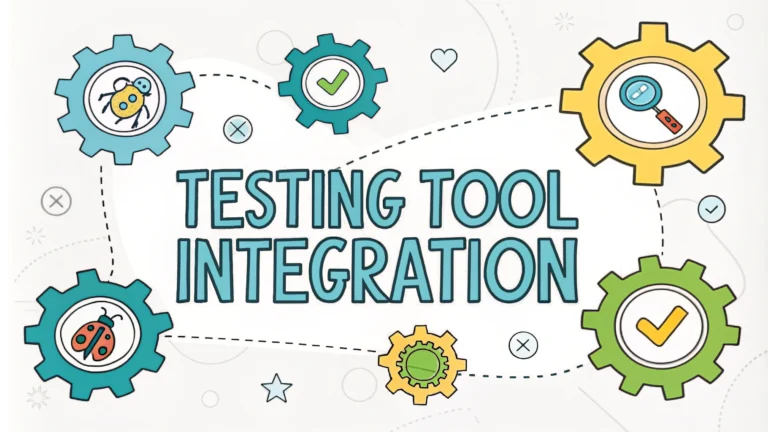Testing tool integration is a critical aspect of cybersecurity assessment that combines various security testing tools to create a more robust and comprehensive penetration testing workflow.
Security professionals need efficient ways to manage multiple testing tools while maintaining accuracy and avoiding redundant efforts during penetration testing engagements.
This guide explores practical methods for integrating popular security testing tools, automating workflows, and maximizing testing efficiency.
Popular Testing Tool Combinations
- Nmap + Metasploit: Network discovery and exploitation
- Burp Suite + OWASP ZAP: Web application testing
- Wireshark + TCPDump: Network traffic analysis
- Nessus + OpenVAS: Vulnerability scanning
Integration Methods
APIs and command-line interfaces enable seamless tool communication and data sharing between different security testing platforms.
Custom scripts written in Python or Bash can automate the execution of multiple tools in sequence.
Framework platforms like Faraday or ThreadFix consolidate results from various testing tools into unified reports.
Automation Best Practices
- Use version control for custom integration scripts
- Implement error handling and logging
- Validate tool output before processing
- Document integration procedures
- Regular testing of automation workflows
Tool Integration Challenges
| Challenge | Solution |
|---|---|
| Data format inconsistencies | Use data transformation scripts |
| Version compatibility | Maintain detailed dependency documentation |
| Resource management | Implement resource monitoring |
Recommended Tool Stacks
Small assessments: Burp Suite Professional + Nmap + Metasploit Framework.
Medium projects: Nessus Professional + Acunetix + Burp Suite Enterprise.
Large enterprises: Tenable.io + HackerOne + Cobalt Strike.
Integration Security Considerations
- Encrypt communication between tools
- Implement access controls for integrated systems
- Regular security updates for all tools
- Monitor for unauthorized access attempts
Next Steps for Implementation
Begin with small-scale integration projects to test workflows and identify potential issues.
Document successful integrations and share knowledge within your security team.
Contact tool vendors for integration support: Burp Suite Support, Tenable Support.
Performance Optimization
Regular optimization of integrated tool stacks ensures maximum efficiency and resource utilization during security assessments.
- Schedule intensive scans during off-peak hours
- Configure proper thread management
- Implement caching mechanisms
- Optimize database queries for result storage
Reporting Integration
Unified Reporting Format
Standardize reporting formats across all integrated tools to ensure consistency and clarity in final deliverables.
Automated Report Generation
- Template-based report creation
- Customizable risk scoring
- Executive and technical summaries
- Evidence collection automation
Quality Assurance
Implement quality controls to maintain testing accuracy and reliability:
- Cross-validate results between tools
- Establish baseline testing requirements
- Perform periodic integration testing
- Review automation outputs regularly
Scaling Your Testing Infrastructure
| Scale Level | Infrastructure Requirements |
|---|---|
| Small Team | Local servers, basic automation |
| Mid-size | Distributed systems, cloud integration |
| Enterprise | Multi-region deployment, high availability |
Building Future-Ready Security Testing
Maintain adaptability in your testing infrastructure to accommodate emerging security tools and evolving threats.
Invest in continuous training and skill development for team members managing integrated security tools.
Establish metrics to measure the effectiveness of your integrated testing approach and adjust strategies accordingly.
FAQs
- What is testing tool integration in penetration testing?
It’s the process of combining and coordinating various security testing tools into a unified testing framework or workflow to perform comprehensive security assessments efficiently. - Which are the most common testing tools that can be integrated for penetration testing?
Popular tools include Metasploit, Nmap, Burp Suite, Wireshark, OWASP ZAP, Nessus, and Sqlmap, which can be integrated through APIs or automation frameworks. - How does API integration work in penetration testing tools?
APIs allow testing tools to communicate and share data with each other, enabling automated scanning, reporting, and vulnerability assessment through standardized interfaces and protocols. - What are the benefits of integrating multiple testing tools?
Integration enables automated workflows, reduces manual effort, provides comprehensive coverage, ensures consistent testing procedures, and generates consolidated reports from multiple tools. - How can testing tools be integrated with CI/CD pipelines?
Through automation scripts, containers, and plugins that connect security tools to CI/CD platforms like Jenkins, GitLab, or GitHub Actions for continuous security testing. - What are the common challenges in testing tool integration?
Compatibility issues between tools, data format inconsistencies, version conflicts, authentication problems, and maintaining integration as tools update. - How can penetration testing tools be integrated with vulnerability management systems?
Through API connections, custom scripts, or dedicated integration platforms that sync scan results, vulnerabilities, and remediation data between systems. - What role does automation play in testing tool integration?
Automation frameworks like Python scripts, Ansible, or dedicated security orchestration platforms coordinate tool execution, data collection, and result analysis automatically. - How can integrated testing tools help with compliance requirements?
Integrated tools can automatically generate compliance reports, track security controls, and provide evidence for audits across multiple security standards. - What security considerations should be taken when integrating testing tools?
Secure API keys, implement access controls, encrypt data transmission, validate tool outputs, and monitor integration points for potential security risks.







